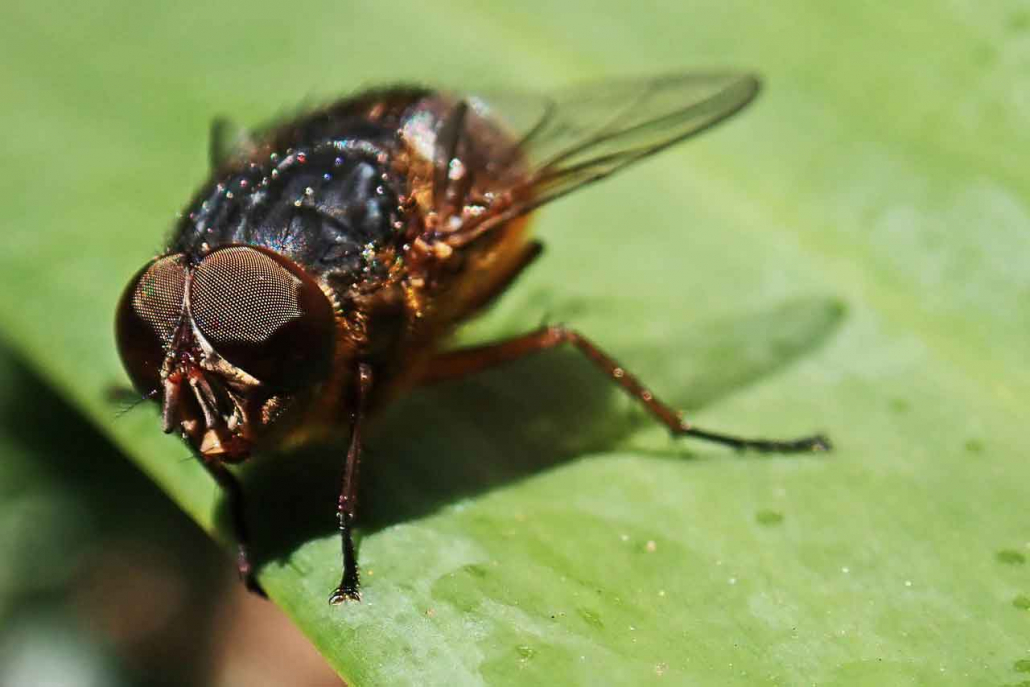Pest Stop: Flies
Unlike other pests such as mosquitoes and fleas, flies are not biting, blood-sucking insects. They feed mainly on liquid or decomposing food, animal and human excrement.
Flies nevertheless have a nasty habit of wandering and landing everywhere, especially in dirty places such as garbage cans and toilets, and bringing back thousands of bacteria that they deposit on your food or on your dishes. Get in touch with our professionals and protect yourself from any illness from this pest.
Mode of disease transmission
When a fly feeds on a source contaminated with bacteria or viruses, it accumulates the germs in its digestive system; she can then contaminate anything that comes into contact with her saliva or feces.
Disease transmission can also occur through physical contact between a fly, our food or any other object belonging to us; the pathogens attached to this fly will thus be retransmitted during physical contact. It should be noted that most of the time, the simple fact of consuming a food on which a fly has landed is enough to make us sick.
Flies as vectors of disease
Contrary to popular belief, flies cause disease more often than it seems. According to the World Health Organization, house flies are capable of transmitting at least 65 diseases among these we can cite:
– Cholera
– Dysentery
– Gastroenteritis
– Tuberculosis
– Typhoid fever
– Conjunctivitis
Unlike mosquitoes and fleas which transmit disease directly into your bloodstream, flies act more as indirect vector agents. The diseases they carry cause diarrhea, skin and eye infections. Flies do not have a mouth which is why they feed on liquid substances.
Good gestures to adopt
Below are simple daily guidelines to protect yourself from fly-borne diseases:
– Properly clean food before consumption;
– Clean kitchen utensils before and immediately after use;
– Keep work surfaces and appliances clean on a daily basis;
– Use dustbins with tight lids.
Respecting hygiene and food safety protocols not only allows you to be protected from many diseases but also makes your premises less attractive to flies and therefore eliminates bacteria.
Fighting flies
During the life of a fly, the female will lay about 400 to 600 eggs. Based on this fact, it is easy to see how a small fly problem can lead to serious health consequences, fortunately there are simple and effective ways to get rid of flies such as:
– The electric racket: this is the modern version of the traditional fly swatter, it works with batteries and produces electric shocks that instantly kill any flying insect, especially flies, by grilling them; the only downside is that by popping the fly, the racket spreads the germs the fly was carrying thus increasing the risk of contamination.
– Sticky strips: they are unhygienic but still very effective in killing flies without harming the environment.
– The electric insect killer: it is an ultra-violet light device that destroys insects by electrification, it was designed to be used inside buildings. Its use is more justified in places like restaurants and hotels.
Of course the above list is exhaustive, the best way to get rid of flies is to hire a pest control company. Our technicians know very well the habits of flies and have a wide range of powerful products to fight against the proliferation of these moreover, we implement means of prevention.

